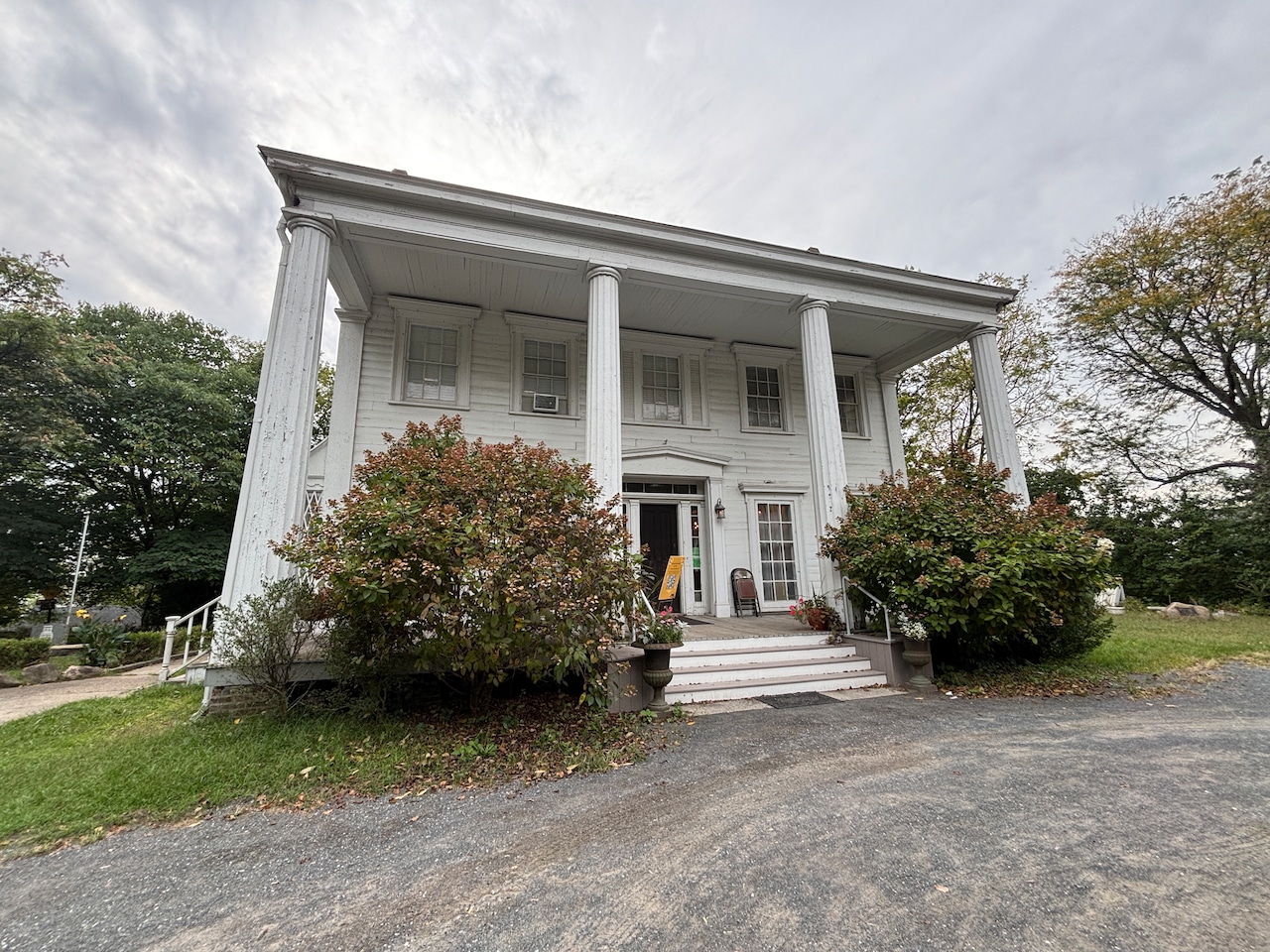STATEN ISLAND, N.Y. — The Staten Island Herb Society will delve into the dark side of botanical history when it presents Ancient Poisons at its Oct. 27 meeting at the Biddle House in Tottenville.
Society president Lucy Bauer will lead the 4 p.m. program, examining how poisonous plants were used in ancient Greece, Rome, and Egypt. The presentation will highlight hemlock, famously associated with the death of Greek philosopher Socrates, making it one of the most iconic toxic plants from antiquity.
 The Biddle House in Tottenville, Staten Island, is a landmark 1840s Greek Revival home built by Henry Hogg Biddle, known for its twin double-height porticos and rich history as part of a temperance-era summer resort and ferry service hub. It is where the Herb Society meets. (Advance/SILive.com | Pamela Silvestri)
The Biddle House in Tottenville, Staten Island, is a landmark 1840s Greek Revival home built by Henry Hogg Biddle, known for its twin double-height porticos and rich history as part of a temperance-era summer resort and ferry service hub. It is where the Herb Society meets. (Advance/SILive.com | Pamela Silvestri)
In honor of Halloween and the historical role of women in herbalism, the program will explore witches and their associations with herbs and plants. Bauer plans to discuss mythical sorceresses from ancient cultures the society has studied this year, as well as real-life healers and midwives who were persecuted as witches when treatments failed.
And here’s a local fun fact: Those delicate white flowers in the woods resembling baby’s breath? They’re actually White Snakeroot, a toxic plant that once caused deadly milk sickness—reportedly claiming the life of Abraham Lincoln’s mother, Nancy Hanks Lincoln.
Themes of the Ancient World
The meeting continues the society’s 2025 theme of exploring herbs of the ancient world, with a focus on Greek, Roman, and Egyptian traditions. Chamomile has been designated the 2025 Herb of the Year.
Recent activities included a successful trip to the Metropolitan Museum, where members enjoyed a private 90-minute tour of the Egyptian wing featuring mummies, hieroglyphics, and artifacts. Members also participated in the September Celebration at Conference House Park, with member Carol Arena donating plants for the event.
Looking ahead, the society will welcome Janice Cox—described as America’s leading natural beauty and home beauty expert—for a November Zoom meeting on ancient beauty practices.
The Staten Island Herb Society maintains a Colonial Garden with native plants, including Black Cohosh. Newsletter contributor Skye Suter notes the plant has been reclassified botanically as Actaea racemosa, though it is still commonly referred to as Cimicifuga racemosa. Also known as Black Snakeroot, Bugbane, and Fairy Candles, the plant was historically used by Native Americans for gynecological and other disorders.
Elections for the society are held every two years, with current officers and board members continuing through the 2025–2026 term. The next election will be held in November 2026.
For more information contact Skye Suter at skyesuter@gmail.com.
If you purchase a product or register for an account through a link on our site, we may receive compensation. By using this site, you consent to our User Agreement and agree that your clicks, interactions, and personal information may be collected, recorded, and/or stored by us and social media and other third-party partners in accordance with our Privacy Policy.
